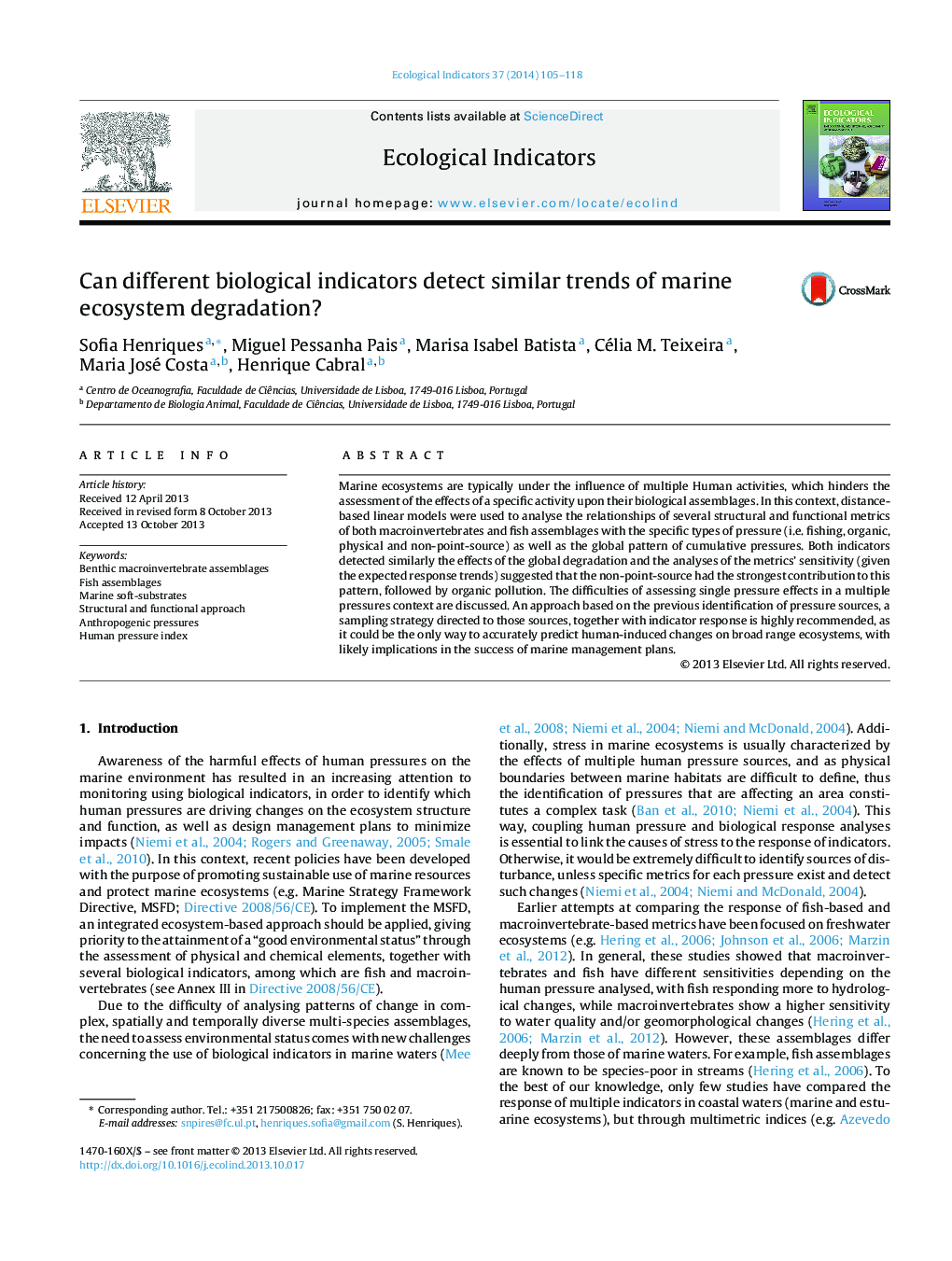| Article ID | Journal | Published Year | Pages | File Type |
|---|---|---|---|---|
| 4373256 | Ecological Indicators | 2014 | 14 Pages |
•Cumulative human pressures were quantified and mapped in a coastal area.•Functional integrity of fish and macroinvertebrate communities was assessed.•Both communities responded similarly to specific pressure sources.•Non-point-source pressure contributed most for the global pattern of degradation.•A new approach is proposed to deal with monitoring needs of broad range ecosystems.
Marine ecosystems are typically under the influence of multiple Human activities, which hinders the assessment of the effects of a specific activity upon their biological assemblages. In this context, distance-based linear models were used to analyse the relationships of several structural and functional metrics of both macroinvertebrates and fish assemblages with the specific types of pressure (i.e. fishing, organic, physical and non-point-source) as well as the global pattern of cumulative pressures. Both indicators detected similarly the effects of the global degradation and the analyses of the metrics’ sensitivity (given the expected response trends) suggested that the non-point-source had the strongest contribution to this pattern, followed by organic pollution. The difficulties of assessing single pressure effects in a multiple pressures context are discussed. An approach based on the previous identification of pressure sources, a sampling strategy directed to those sources, together with indicator response is highly recommended, as it could be the only way to accurately predict human-induced changes on broad range ecosystems, with likely implications in the success of marine management plans.
